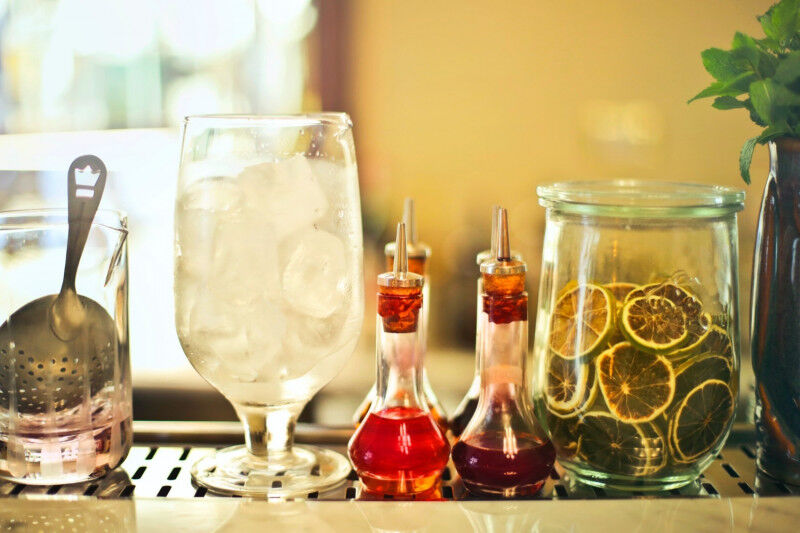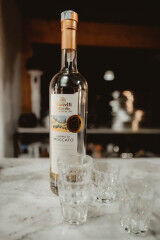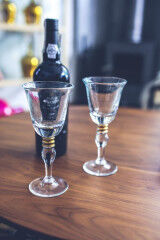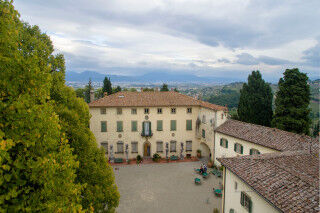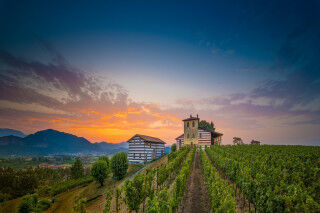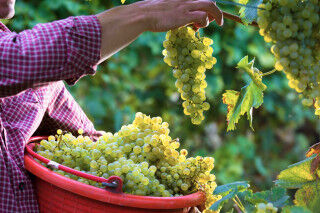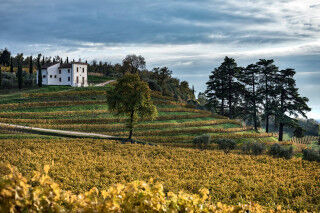A VIBRANT RED LIQUID IN YOUR GLASS - AND IT'S NOT WINE
That vibrant red drink in your glass is both invigorating and intriguing, and it’s not wine: we’re looking at the voluptuous, thirst-quenching Bitter, a genuine Italian icon. And it is precisely that bitter taste that makes it extremely pleasant to be enjoyed either cold or chilled. Definitely a drink that stimulates your appetite, Bitters are in fact made to be enjoyed as an aperitif, a pre-meal tipple.
AN ITALIAN DIGESTIF’S FASCINATING BACKGROUND
The production of this Italian aperitif-digestif began around the 16th century, with Holland leading the pack. Initially a beverage made of grain brandy, the Dutch company Lucas Bols (still a global presence in the world of fine spirits), boosted production levels to an industrial level. This step towards expansion ensured that 1575 became the year Bitters expanded from a micro-production level to large-scale manufacturing capacities.
It wasn’t until the 19th century when Italian legend, Gaspare Campari, examined the formula for Bitters, and consequently commercialized a product he named "Bitter all'uso d’Hollande” (Bitters used Dutch-style). Indeed, the term Italian term Amaro, also directly called Bitter in Italian, does translate literally into astringent or sour, or, of course, bitter.
This is a clear indication of the liquid’s organoleptic characteristics, obtained from an extract of aromatic and medicinal plants. The desired effect of drinking Bitters is to stimulate the taste buds, re-awaken dull appetites, and ultimately aid with digestion.
HOW ARE BITTERS CRAFTED?
Bitters are typically prepared with a base of refined alcohol measuring in at 96°. Added to this base is water, sometimes a sugar sweetener, and most flavourfully, extracts of acidic or astringent aromatic plants complemented by essential oils. Occasionally, a Bitters recipe will substitute wine alcohol for the classic alcohol base.
Fundamentally, there are two types of Bitters:
- versions crafted with multiple aromatic plants and herbs and spices tailored around the plants’ aromas
- versions created from the incorporation of single plant sources
BALDO BALDININI, A VISIONARY CHANGING THE WORLD OF ITALIAN BITTERS
You could be forgiven for thinking perhaps that Baldo Baldinini is a man of the past. However, this craftsman, so deeply knowledgeable in ancient wisdom and brimming with cultural scholarship, is certainly a contemporary presence.
Baldinini can be found experimenting in his remote “olfactory,” or workshop, in the Valmarecchia area, a charming area divided amongst Tuscany, Le Marche and Emilia-Romagna, and frequently associated with the famous Italian city of Rimini, a summertime tourist mecca and home to Italy’s very first beach club.
Following the intuition of an alchemist, Baldinini creates liquors made from the highest-quality raw materials available. This attentive insistence on top-level ingredients naturally results in a line of Bitters so world-class, they’ve attained a quasi-mythical reputation.
Baldinini has repeatedly demonstrated his innate ability to access the very heart of making Bitters. Thanks to his boundless passion, and 30 years of intense studies and meticulous research, Baldinini has carried out numerous experiments, resulting in innovations within the world of plants and flowers, and their cultivation and harvesting. Naturally, this dedication to studying the very foundation of Bitters has allowed Baldinini to gain insight and a vision of Bitters that other producers working on more macro-levels might overlook.
As soon as you enter into Baldinini’s workshop, it’s clear that his is a special kind of workshop. You might sense his immediate devotion to studying and creating a cultural layer of the “nose.” How so? This time, your visual perceptions will be called into play as you contemplate Baldinini’s workshop, and how it reflects into his work.
Suggestive wood and crystal cases contain mysterious, mythical vases and bottles, home to his collection of essences, extracts, essential oils, tinctures, and more. Peruse the jars of spices and medicinal botanical specimens hanging 3 meters above the ground, and you’ll gain more insight into the quasi-magical abilities of Baldinini to pull together astonishing blends and mixtures resulting in the sensorial expressions of his dreams.
HOW TO MAKE BITTERS BITTER
What are some of the secrets to making Bitters? First, we begin with ingredients. To make a truly great Bitter, 42 botanical varieties of plants and/or herbs are needed. Once those have been identified, they’ll need to carefully be selected and harvested before infusing in the finest Albana.
Albana is a wine miraculously adept at extracting aromas and fragrances. When the wines and aromas are combined, the result are vivid scents of fresh fruits, and essential oils emanating from the best Italian citrus fruits. This gives the palate pleasant spiciness meandering into a bitter aftertaste that Bitters are known for.
If Bitters instead have resulted in a beautiful paradigm, Vermouth Rosso 721 has become an absolute must-have, reference point for the world’s finest mixologists. Vermouth Rosso 721 is an inebriating, extravagant vermouth where the drink’s rose-based flowery note brands itself on the vermouth.
What do we taste when sampling the Vermouth Rosso 721? A bright, enveloping, intense aroma recalling the bitterness of absinthe. Elegant, spicy notes of bark, vanilla, and pastries round out towards the finish, with hints of honeyed acacia and violets present.
The Vermouth Rosso 721 goes well beyond typical flavor parameters of classic Vermouth. We find a surplus of ripe, red fruits with minuscule wild fruits sneaking in, and closing with an aroma of myrtle. The vermouth is extremely fragrant and sweet, and provides a more-than satisfactory interweaving of herbal features and botanicals. We close the Vermouth tasting sensation with a dry finish, and accents of cocoa beans, vanilla, apricot, and pepper.
While our focus today was on Italian Liquors, don’t forget to head to the Wine Selections page to learn more about the wines Italy magnificently produces. Looking for something to snack on straight from Italy? Check out the Food Selections page and see what we can send direct to your doorstop. When you visit the Food section, you’ll see Piave cheese - learn more with Andrea Grignaffini by reading Everything You Wanted to Know About Piave DOP Cheese. Mamablip food&wine journalist Lele Gobbi also takes a look with Piave DOP Cheese: an Italian Heritage Worth Protecting.
Don't forget to register for Mamablip's weekly newsletter for updates on all the exciting newest Mamablip Blog articles, recipes and other wine news from Italy.
